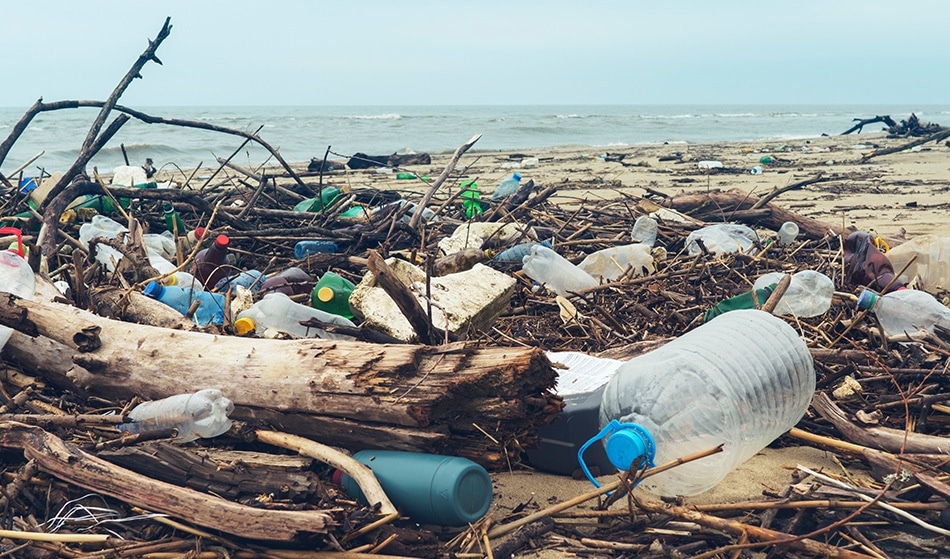
Image Credits: Larina Marina/shutterstock.com
The devastating environmental effects of plastic waste are very much in the public consciousness. There is little hope that the production of plastic waste can be slowed by any meaningful rate in the near future or that the damage already done by plastic waste can be in any way reversed. Despite this, there are many initiatives worldwide dedicated to harnessing plastic waste for good.
Plastic products can take well over 450 years to fully decompose, which is often thought to be one of the material’s most damaging properties. However, this long lifespan can open plastic up for use in surprising applications.
What Products can be Made from Plastic Waste?
Roads have been constructed from polymer glue made from recycled, shredded plastic. In 2016, Adidas rolled out a new line of shoes that were made from plastic, 95% of which was recovered from the ocean. They later introduced swimwear made from plastic. Sunglasses and skateboards are also getting a plastic makeover. However, there is one particular application which has the potential to alter the landscape in more immediately noticeable ways.
Applications for Plastic Waste in Building
Plastic drinking bottles can be recycled and made into building bricks. The advantages of plastic building bricks over conventional bricks are numerous as the bricks are thinner, lighter, and have superior heat and noise insulation capabilities. Surprisingly, they even equal conventional bricks in strength and durability.
The main advantage of bricks made from waste plastic is that plastic is being removed from the environment in fairly large quantities. One company has even claimed that one pound of their plastic bricks equals one pound of plastic removed from the ocean. This reduces the amount of chemical contamination from the plastic biodegrading process, as well as ensuring that deaths and injuries to wildlife from the accidental ingestion of plastic are reduced. It will also lower the amount of trace plastic that ends up in the human food chain.
On average, one brick will only use 20 plastic bottles. The process as a whole uses less energy than recycling plastic for different uses. Plastic bottles do not need to be washed or sorted for the brick-making process, and no adhesives are needed to use the bricks once they have been created.
One significant disadvantage of this application is that plastic bricks may compress under pressure, which means that placing plastic bricks under heavy structural loads can create serious structural issues with buildings. However, plastic bricks can be used as wall fillers due to their excellent heat and noise insulation capabilities. Fences and non-load-bearing walls can also be made out of plastic bricks, circumventing issues with compression while also putting them to practical use.
In addition to bricks, plastic waste consisting of a variety of different plastic products together with old, discarded tires can be made into beams, blocks, and pillars. In Colombia, communities are encouraged to collect plastic debris so that it can be cleaned and then ground into a powder. The powder is then melted and formed into structural pieces that fit together to form fully functioning houses. Similar to plastic bricks, no adhesive is needed to lock the structures together.
Plastic roads can also be constructed using unsorted plastic products to make asphalt, without the sand and gravel which is usually used. It has been found that plastic roads hold up better in extreme weather and under heavy traffic loads, as the asphalt emulsion bonds better to plastic than traditional materials such as sand and gravel.
Summary
Plastic waste and the consequential pollution it creates are having a serious and undeniable effect on the global environment. Life on both the land and in the oceans suffers as a result of poor recycling rates contrasting with high plastic production rates.
However, there are a great many companies working to turn the world’s plastic problem around. With ever-increasing populations and larger proportions of society choosing to live in cities, there is ample opportunity to use plastic waste in construction and building. Plastic bricks, beams, pillars, and blocks have all proved to be attractive alternatives to traditional building materials. In particular, plastic bricks harbor excellent sound and heat insulation properties, putting them at a distinct advantage over conventional bricks.
Although plastic does eventually degrade (but only after a period of over 400 years) it is a remarkably durable material, which has both made it an invaluable building resource and a devastating environmental threat.
Sources and Further Reading
Disclaimer: The views expressed here are those of the author expressed in their private capacity and do not necessarily represent the views of AZoM.com Limited T/A AZoNetwork the owner and operator of this website. This disclaimer forms part of the Terms and conditions of use of this website.